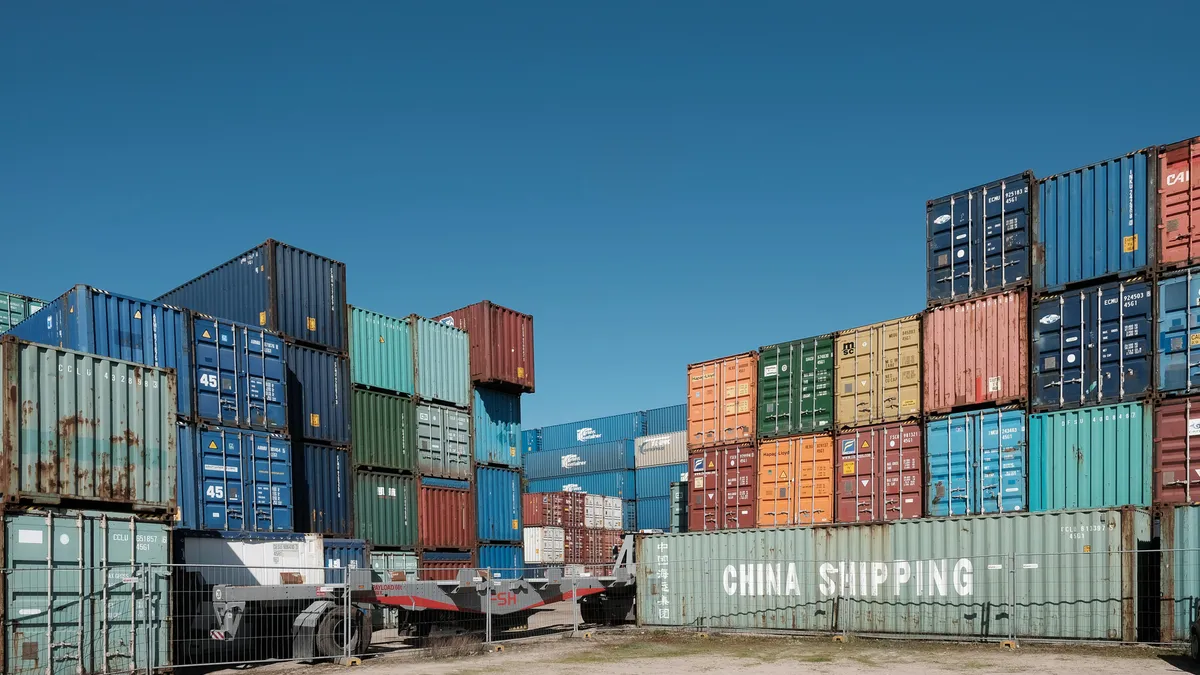UPDATE April 3, 2018: Chinese authorities have seized 111,000 metric tons of "smuggled solid waste" and "smashed" 25 smuggling rings so far in 2018, as reported by the South China Morning Post.
At a recent meeting, the newly formed Ecology and Environment Ministry (formerly the Ministry of Environmental Protection) said it was considering the country's fight against "foreign waste" a symbol and symbolic measure in "the creation of an ecological civilization in China."
Around 64,700 metric tons of that smuggled waste includes slag from mines, and authorities have arrested 52 people as of April 2, the paper said, citing state media. Chinese officials arrested 259 people for smuggling waste in 2017.
Dive Brief:
- China is beginning 2018 with a reminder that it has officially stopped accepting 24 types of scrap imports and may add new ones to the list next year as domestic recycling efforts increase. "Foreign garbage has been widely denounced," said Guo Jing, chief of the International Department at China's Ministry of Environmental Protection, as reported by national press agency Xinhua.
- According to the article, customs officials filed 298 criminal cases against "garbage smuggling" between February and December 2017. As of Jan. 1, the 24 types of scrap material are now considered illegal waste too. Though Xinhua wrote that, "some companies still take risks to make profits by importing foreign garbage illegally."
- The article also emphasized a requirement that 46 Chinese cities have mandatory waste sorting plans by the end of 2020. The government reported that, as of November, regulations had been passed or were being developed in dozens of these cities. Residential recycling reward programs, commercial food scrap digestion, solid waste combustion and a cement aggregate operation were all cited as examples of China's increasing domestic capabilities.
Dive Insight:
Ever since China upended global recycling markets with its July 2017 import ban announcement the industry has been abuzz with speculation about whether the country would actually follow through. While it's still too early to say for sure which way this will all play out, especially with enforcement of the new 0.5% contamination standard delayed until March, recyclers around the world are currently feeling effects.
Imports had already slowed toward the end of 2017 due to a reduction in available licenses and concerns about material being rejected. Though media coverage has increased in recent weeks as the Jan. 1 ban approached, with common details about difficulties for existing businesses and a lack of clear options for many governments. Effects have been reported for nearby recyclers in Hong Kong all the way to operations in Australia, the U.K., Canada and the U.S., among others. Many countries have joined together in submitting their concerns to the World Trade Organization, which has shown only some success.
Trade associations representing the U.S. have specifically asked for more clarity, more time and more leniency. Talk of developing new domestic markets also continues. Though in the short-term, exporting is still the most viable option for most companies. As China's demand for mixed paper and plastics decreases, U.S. recyclers have diverted large volumes of material to India, Vietnam, Malaysia, Mexico and other countries.
At least for now, none of these options have been enough to replace China's outsized demand from recent years. This has led many material recovery facility operators to slow down their lines, add labor or consider investing in new equipment. It has also led service providers in states around the U.S. to suspend service, raise prices or exclude certain materials from recycling programs.
Opinions about whether the U.S. industry can function without China, and vice versa, change by the week. Though as of this week, and this new year, China seems to be doubling down on its stance that the days of rampant importing are over.














